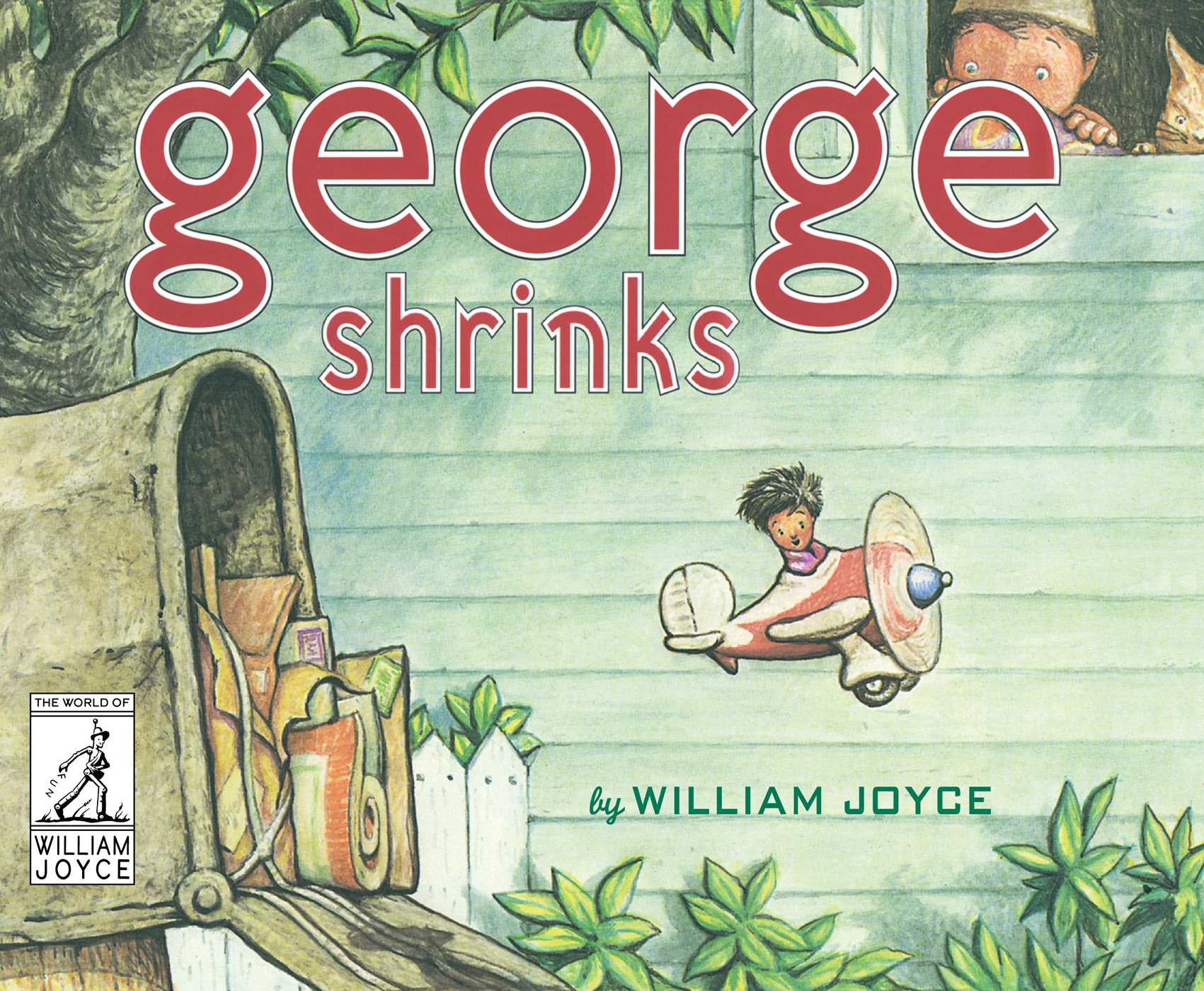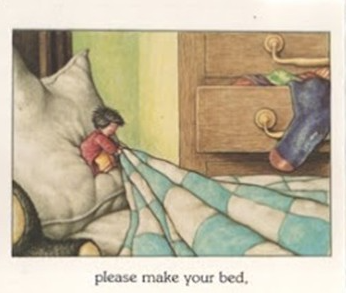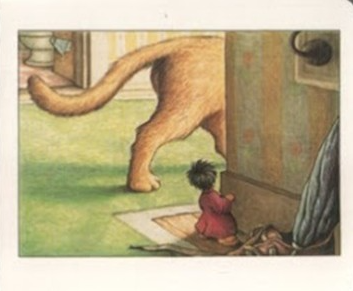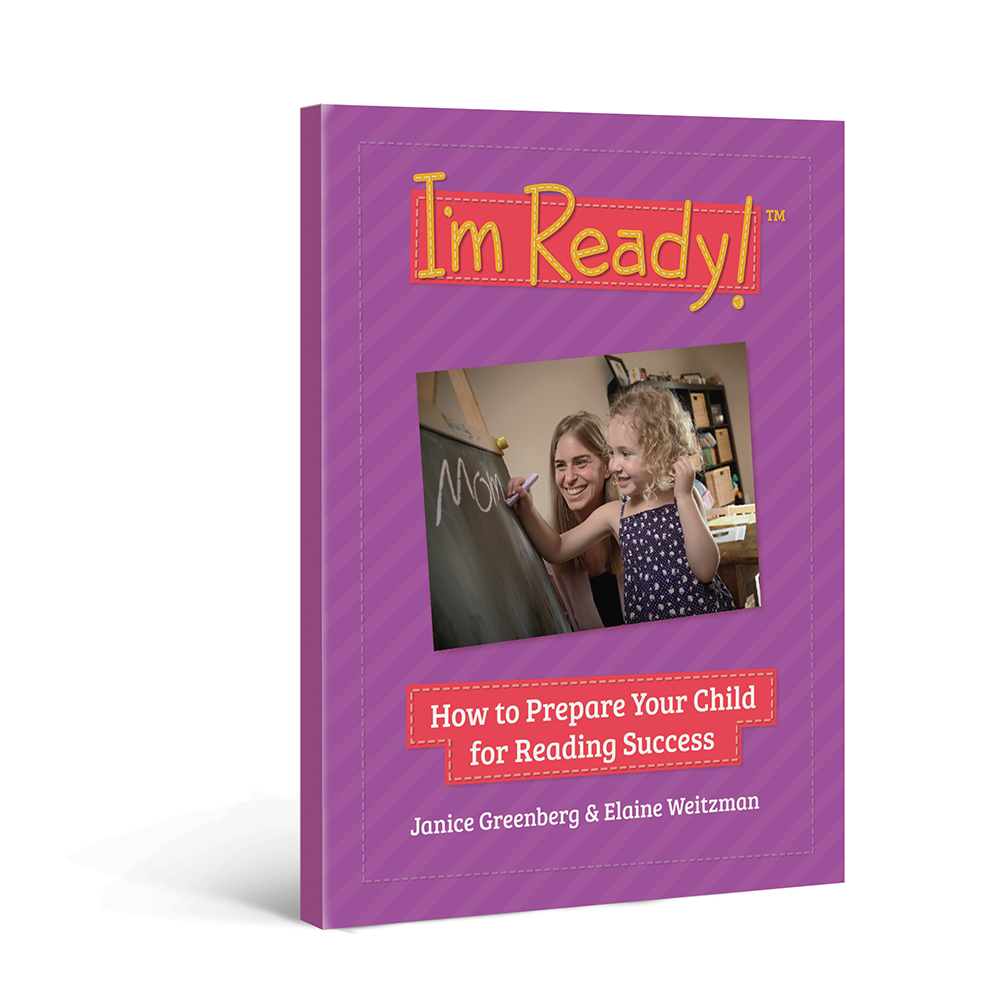This month's Book Nook topic is...
Incorporating Pretend with
George Shrinks

One way to bring a story to life is by pretending to be the characters. Acting out a story helps children build vocabulary, deepen their understanding of the plot and connect with the characters’ feelings and motivations.
Let’s get started!
The Book:
George Shrinks by William Joyce
Why We Chose This Book
In this imaginative story, a boy named George wakes up to find he’s the size of an action figure. While his parents are out, they leave him a note with chores to do―like making his bed and taking a bath. What would be ordinary tasks become big adventures when you’re as small as George.
Children can easily relate to the feeling of being small in a big world, and George Shrinks sparks imagination that makes it perfect for pretend.
Get to Know the Story
When reading George Shrinks for the first time, focus on helping the child understand the basic parts of the story, such as the:
- Characters
- Setting
- Problem
- Actions
- Resolution
We call these elements “CSPAR” and you can read more about them in this Book Nook post. Keep your conversations short and natural, pointing out the key elements as you go. In this first reading, the goal is to make sure the child understands what’s happening in the story
Time to Pretend
After you have read the book a few times, and the child is familiar with the story, pretending by acting out parts of the story is a great way to support children’s comprehension! When children act out a story, they gain a better understanding of its sequence of events and the characters’ feelings and motivations. Here are some tips to get started:
- Use props – gather some household items that will help the child pretend what it would be like to use objects that are too big, like adult-sized clothing for the child to wear, or a large hairbrush to use as a pretend toothbrush.
- Assign roles – decide who will play George, his little brother or the cat. Peers, siblings or toys can play a role too.
- Keep the book nearby – put a copy of the book and the props somewhere accessible to the child in case they want to pretend again.
Encourage Deeper Thinking Through Pretend Play
While you’re acting out the story, slip in comments and playful questions that encourage the child to think beyond the words and pictures. Asking questions in the middle of play helps them imagine what the characters are feeling and why things happen in the story. You might say:
- “How would you make your bed if everything was giant?” (Act it out together, lifting heavy “giant” blankets.)

- “I wonder what would happen if the cat sees us.” (Act out what the child imagines would happen.)

If the child has difficulty answering questions, you can answer yourself to give them an idea or make more comments about what George may be thinking and feeling.
Incorporating pretend into story time encourages children to use their imagination and think more deeply about the book and its characters.
Happy reading!
More Resources
The strategies in this Book Nook post are drawn from Hanen’s practical, research-based guidebooks for building emergent literacy. Explore the links below to learn more about how these guidebooks can support you.
For Parents I'm Ready! guidebook
I'm Ready! guidebook
For Educators ABC and Beyond guidebook
ABC and Beyond guidebook
